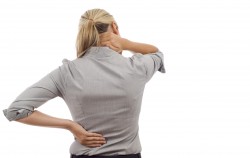Although there are thousands of documents telling you what to look for if your child is on drugs, there are not many ways to tell if your child is actually selling drugs. According to the Department of Justice, the mandatory minimum sentence for dealing drugs is determined by the drugs that the person is selling. Recently the age of drug dealers is decreasing and the minimum age for sentencing as an adult has too.
The Biggest Sign is Income
The biggest sign that your child is dealing drugs is his or her income. If your child suddenly starts purchasing things on their own with no other source of income, it is possible they are dealing drugs. Before mentioning drug dealing it is important to ascertain that the money is not coming from another source such as a relative or part time employment.
A person with no income being able to purchase expensive things has a hidden source of income. Drug dealing in this case is extremely likely.
Unusual Journals
Some drug dealers keep logs of their purchases and income. Many of them need to do this to make sure that they remember who owes them money for what. Each journal entry is probably encoded with either a numeric sequence or a alpha numeric sequence. These journals are usually kept with the dealer
Equipment for Selling and Using Drugs
If your child is dealing drugs chances are they have the equipment to do so. This includes drug paraphernalia and other objects such as:
- pipes,
- bags,
- scales,
- cutting agents,
- razor blades,
- rolled straws or money, and
- Ziploc or sandwich bags.
These are all either paraphernalia or tools used to sell drugs. The presents of these are an indicator that your child is at least doing drugs if not selling them. Another good
Indications of Drug Use
Although not technically signs of dealing drugs, many dealers wind up using drugs. The classic signs of drug use are well known. Some of these signs are:
- paraphernalia,
- glassy eyes,
- mood swings,
- agitation,
- irritability,
- changes in sleeping patterns,
- suspicious absences,
- suspicious phone calls, and
- changes in friends.
There are a lot more signs that are specific to the drug that the person is doing or dealing. The signs of these drugs are hard to predict and often mimic other illnesses or teenage behavior.
Talk to Your Child
One of the best ways to learn the habits and preferences of your child is to have frank open conversations with them. By establishing the bonds of trust between the two of you, you can convince them when they need help. If you suspect that your child is dealing drugs or addicted to drugs, call 800-934-1582(Sponsored) for help. For more information of getting that help or to find treatment for yourself or your child, call us before it is too late.
According to the National Institute on Drug Abuse, drug addiction is a complex illness that can quickly get out of control. Many people say that addiction takes hold of them before they realize it. They are caught in the cycle of drug abuse, which is why starting treatment early is so important. There are many reasons why you should start treatment as soon as you realize that you have an addiction.
1. Drugs Cause Issues with Family
Most people who are addicted to drugs find that their family starts to notice first. Family members often feel the brunt of the physical, mental, and emotional abuse that drug addicts often are responsible for.
2. Drugs Cause Financial Problems
Drugs are normally expensive. When you are addicted, you rapidly become tolerant to the drugs that you take. If you are tolerant to drugs, you need more and more of them in order to achieve the same effect. Purchasing increasing amounts is extremely expensive.
3. Drugs can Cause Legal Problems
You can be arrested and imprisoned for possessing or selling certain drugs. You can also be arrested for driving while under the influence of these and other drugs. The legal difficulties can take years to clear up and you can have an arrest on your record for a lifetime.
4. It is Easy to Become Tolerant to the Drugs
Tolerance builds quickly. Although each person’s tolerance level is a bit different, it will eventually take more and more of the drug to achieve the same effect. Each time you take the drug your tolerance builds.
5. The Drugs can Damage your Emotions
Drugs can cause irrevocable damage to the limbic system. Drugs can cause you to lose your sense of pleasure, particularly in the case of opiates. Although this loss is not normally permanent, it can be.
6. Drugs can Cause Psychosis
Many hallucinogens and other drugs cause psychosis. This psychosis can be temporary or permanent. Some can be extremely dangerous and cause a condition called Hallucinogenic Persisting Precipitation Disorder. This is a permanent state of psychosis and causes a person to continuously hallucinate.
7. Drugs Cause Organ Damage
Most drugs cause damage to all of the organ systems. Depending on the drug, they can stop your heart, liver, lungs, and other organs.
8. Drugs can Kill You
An overdose is serious illness or death caused by taking too much of or mixing a drug. Overdose reactions need to be treated by qualified doctors, usually in a hospital setting.
9. Drugs can Make you Lose Control
Not only do you lose your health, drugs make you lose control of your life. You wind up trapped in a cycle of acquiring the drug, using the drug, and acquiring the drug again.
10. Getting Treatment is Easy
Finding a way to get treatment for a drug addiction is easy. Call us at 1- 800-934-1582(Sponsored) . We can find you the help that you need to start your treatment as soon as possible. The consequences of drug use are devastating. It is time to take back control.
The Drug Enforcement Administration or DEA lists five of the most commonly abused narcotics and their properties. These narcotics are very addictive and very difficult to get off once you are addicted. Although withdrawal from these drugs is not deadly it is extremely unpleasant which makes the relapse rate extremely high. If you are addicted to any one of these drugs, you should seek treatment as soon as possible.
1. Oxycodone
Oxycodone is a prescription painkiller that is mainly used to treat chronic pain. Unfortunately, it is also one of the most abused painkillers on the market. This synthetic is derived from the parts of the opium poppy. This sedative is also extremely easy to overdose on, especially if you are combining it with alcohol or other sedatives.
2. Methadone
Methadone is an opium like synthetic narcotic. It has been in use for several decades as a treatment for opiate or opioid addiction. Unfortunately, it is addictive itself. Many people trying to get off opiates wind up addicted to methadone. It is not chemically like the other opiates, the effects and side effects are the same.
3. Heroin
Heroin is an illegal opiate. It is extremely addictive because it acts on the body very quickly. Heroin addicts smoke, inject, or snort the heroin. Although the purity of heroin has gone down in recent years, it is still an extremely potent drug. There are several variants of heroin on the market. These variants are:
- black tar,
- horse,
- hell dust,
- smack, and
- chiva.
Heroin is mixed with powdered milk, starch, and quinine. It is also mixed with other drugs in order to enhance their effects.
A heroin addiction can turn deadly very quickly and the Centers for Disease Control suggests that heroin overdose is reaching epidemic proportions.
4. Opium
Opium is the original opiate. It is as pure as it can get. Opium is a direct extract of the papaver somniferum flower also known as the opium poppy. Although opium is sometimes brewed into a tea it is also smoked. It has an extremely colorful history that goes back centuries in both Eastern and Western culture although it is less popular now than it has been in the past.
5. Morphine
Morphine is a nonsynthetic painkiller derived directly from opium. It is extremely addictive but very useful for treating chronic pain and end stage cancer patients. Morphine is highly regulated and difficult to abuse illegally because of this regulation. It is however extremely easy to overdose on because of how powerful most dosages of it are. It is one of the original medical uses of opium.
If you are addicted to any of these medications, it is important to seek treatment as soon as possible. For more information on any of these drugs or for your treatment options call use at 800-934-1582(Sponsored) . We can help you conquer your addiction and avoid the painful withdrawal symptoms.
According to the National Institute on Drug Abuse, “Drinking prescription-strength cough syrup containing codeine and promethazine mixed with soda was referenced frequently in some popular music beginning in the late 90s and has now become increasingly popular among youth in several areas of the country.” Codeine is an addictive substance and can be highly dangerous, even deadly, when abused in high doses.
This is why adolescents abusing and addicted to codeine need to receive formal addiction treatment. Treatment for adolescents, however, must be handled differently in some ways from treatment for adult addicts.
Behavioral Therapies
As stated by the NIDA, “Behavioral therapies are effective in addressing adolescent drug use.” In fact, this is the most effective treatment option available, and it is usually necessary as a part of any teenager’s treatment program for codeine abuse and addiction. Cognitive-behavioral therapy has been used for many years as an adolescent addiction treatment, helping young addicts learn how to identify dangerous behaviors and begin to change them. This therapeutic option often allows the patient to see their drug abuse in a different light and to realize how much their codeine addiction is controlling and hurting them.
Adolescents who abuse drugs also have different treatment needs from adult addicts, and family involvement can be incredibly beneficial and necessary to the individual. Multidimensional family therapy is often used in any type of treatment setting, and family members are able to become involved by attending therapy sessions with the patient and learning how the family can better function in order to discourage drug abuse and encourage safer behaviors. Individual and parallel sessions are held so the patient is able to receive treatment with their family’s involvement and still have private sessions.
Another option, multisystemic therapy “addresses the factors associated with serious antisocial behavior in children and adolescents who abuse alcohol and other drugs” (NIDA). This program usually lasts six months or so but it can help the patient get to the bottom of feelings of unhappiness or failure, past trauma, biological factors, and other issues that may have helped lead to their addictions.
Holistic Modalities
Generally, medications would also be used to treat codeine addiction in adults, but this option is often not utilized in the treatment of adolescents. This is because most opioid addiction medications are not approved yet for adolescent use and because they can be difficult on the user. Therefore, it is often more beneficial when codeine addiction in teens and children can be treated with therapy.
However, holistic modalities can be helpful, especially for those adolescents not yet comfortable with talk therapy. Art therapy has “proved effective with adolescents” who do not come to the treatment with as many preconceived notions as they often do when beginning talk therapy (Western Journal of Medicine). While this has been found to be one of the most helpful holistic treatments for adolescent abuse syndromes, others like performance art or animal therapy may be beneficial too.
Is Your Child Abusing Codeine?
It is never too early to intervene in an adolescent’s drug abuse and to begin treatment, especially when they are abusing a dangerous and highly addictive substance like codeine. Call 800-934-1582(Sponsored) today to find out more about the possible treatment options available.
Over the past decade, heroin abuse and addiction rates have skyrocketed. While the holidays can be difficult when dealing with addiction in any form, heroin addictions exert a tremendous toll on the person affected as well as his or her loved ones. With the holiday season here, individuals and families living with heroin addiction may have an especially difficult time dealing with the high expectations that come with this time of year.
Too often, people struggling with addiction must hit rock bottom before deciding to get needed treatment help. With the pressures that come with the holiday season, waiting until the beginning of the year carries a certain degree of risk considering how heroin attacks the brain and body. Understanding the risks involved may help in taking the necessary steps to get heroin addiction treatment now rather than later.
Heroin Addiction
The heroin epidemic of the 60s and 70s pales in comparison to today’s rates of heroin abuse. What was once confined to inner city regions has reached across socioeconomic lines to affect middle-class Americans as well.
By the time heroin addiction takes hold, a person requires the drug’s effects in order to feel normal, both physically and mentally, according to the National Drug Intelligence Center. The mental hold this drug takes lies at the root of heroin addiction.
Holiday Pressures
Whether a person starts using heroin for recreational purposes or as a means to escape, the damaging effects of the drug become a crutch that forces him or her to keep using in order to cope with daily life. If the stressors associated with daily life drive you to use heroin, the added pressures that come with the holiday season can easily kick drug-using behaviors into high gear.
Seasonal Effects
Many parts of the United States experience cold, harsh weather conditions for the duration of the holiday season. The effects of inclement weather can trigger feelings of sadness, anxiety and irritability much like the effects of excess heroin use does. If you’re someone who’s sensitive to the weather, the winter season may well aggravate drug-using urges all the more.
Why Consider Heroin Addiction Treatment Now?
Emotional Highs & Lows
Anyone who’s used heroin for any length of time well knows the emotional roller coaster that comes with frequent drug use. Add to this the pressure to meet friend and family expectations in terms of gift-giving and spending quality time together, and emotions fluctuate all the more. This makes for prime conditions for increased drug use, which only works to strengthen the hold heroin addiction has over your life, according to the National Institute on Drug Abuse.
Work Considerations
Getting heroin addiction treatment now rather than after the holidays not only keeps a bad situation from getting worse, but tends to fit in well with the average work and/or school schedule. Employers will likely be more agreeable to you taking time off from work during the winter months as this is typically a slow time of year for some businesses. Likewise, those with children can make arrangements for them to stay with relatives for the holidays.
A True Holiday Gift ….
When all is said and done, heroin addiction becomes its own lifestyle, replacing everything that makes a person an individual with an over-arching obsession for the drug. With continued drug use, users stand to lose all they hold dear, including friends, family, work as well as any sense of self they may have had. Getting heroin addiction treatment now can be “the” best gift you can give yourself and your loved ones.
If you or someone you know struggles with heroin addiction this holiday season, don’t wait to get needed treatment help. If you have any further questions about heroin addiction or need information on local drug treatment programs, please feel free to call our toll-free helpline at 800-934-1582(Sponsored) .
Becoming addicted to a prescription drug, such as a painkiller, is more common than many people believe. While this may not sound as serious as an addiction to an illegal street drug, it can have an impact on your mind and body.
Oxycontin is one of the most commonly prescribed pain medications. There are many reasons for this, including the fact that it has been proven effective. However, there is a problem: it can also be addictive.
For example, a person may begin to take Oxycontin with all the best intentions. At some point, an addiction may form. Long after they need the drug to control pain, they continue to use it because of the way it makes them feel.
Are you Addicted to Oxycontin?
If you find yourself addicted to Oxycontin, if you realize that this has taken control of your life, you have a few options. First off, you may want to discuss this with your medical professional. This is particularly true if you were first prescribed the medication for pain management.
While your doctor may be able to point you in the right direction, they are unable to help you directly overcome your addiction. This is why you should consider the benefits of entering inpatient rehab. Once you make this move, it won’t be long before you feel better about your situation.
Benefits of Rehabilitation
Nobody wants to enter inpatient rehab for Oxycontin addiction, but if you are in this position it is the best way to speed up the treatment and recovery process. Some of the many benefits of inpatient rehabilitation include:
- Away from the temptation of drugs. When you check into an inpatient facility, you don’t have to concern yourself with being tempted by drugs. Sure, you may still experience the cravings, but you won’t be in position to use Oxycontin at this time.
- Detoxification. There is nothing simple about detoxification, as it can bring a variety of withdrawal symptoms into your life. Even so, it is a process you need to go through if you want to kick your addiction to the curb once and for all. Detoxification can go a long way in ensuring that you don’t relapse, and that is something that should be important to you.
- Spend time with a medical team that cares about you. There is nothing better than knowing you are in the capable hands of a medical team that wants you to get better. Everybody you come in contact with has the same goal: to help you beat your addiction and lead a better life.
- Meet other people in the same position. It is often times helpful to realize that others are in the same position as you. During your time in inpatient rehab, you can communicate with others who have gone down the same path. It may not sound like a big deal, but this can help you understand you are not alone.
- Nothing else to worry about. When you check into an inpatient rehab program, the only thing on your mind is getting better. Nothing else matters at this time. The only thing you have to concern yourself with is beating your addiction.
- Spend time on yourself. As noted above, this will grant you the opportunity to spend time on yourself without the need to worry about other areas of your life. This doesn’t mean you have to put everything on the backburner. It does mean that you will find yourself in position to focus on getting yourself better.
- Access to counseling and therapy. There is more to inpatient rehab than sitting around, not using Oxycontin, and waiting to feel better. You will take part in counseling and therapy sessions, both of which are meant to put you in a better place moving forward.
- Chance to reflect on the past. Sometimes all it takes is an opportunity to look back in order to realize that you have made some mistakes. Here is the good thing: these mistakes are in the past and you can learn from them.
- Learn more about your addiction. Like many, your Oxycontin addiction may have snuck up on you. This is your time to learn more about your addiction, including how it happens, why it is dangerous, and what you can do to avoid a similar fate in the future.
- Relapse prevention. The last thing you want to do is complete a rehab program, just to find yourself abusing Oxycontin again in the future. This is one of the most important benefits of entering inpatient rehab. Your goal is to do whatever it takes to avoid drug abuse again in the future.
There is no denying the fact that Oxycontin addiction is extremely dangerous. Those who enter inpatient rehab are in position to overcome their addiction and lead a better life in the future.
The New York Times asserts “Experts in addiction say that the use of medications like Vicodin, OxyContin and oxycodone—all opiates like heroin—has altered the landscape of addiction and relapse, in ways that affect both current users and former ones.” One of the biggest changes has been the link between non-medical—use without a prescription, use for purposes other than for what they were prescribed, or use simply for the experience or feeling the drug can cause—use of prescription painkillers and heroin use. This is especially the case among women.
What follows are a number of facts from respected agencies. They may be overwhelming, but they speak to the very real crisis facing women. If you are a woman and you feel that you already have a troubled relationship with prescription painkillers, please contact Narcotics.com at 800-934-1582(Sponsored) and speak to a specialist. We are waiting to help.
Painkiller and Heroin Facts:
- A National Institute on Drug Abuse presentation estimated “between 26.4 million and 36 million people abuse opioids worldwide, with an estimated 2.1 million people in the United States suffering from substance use disorders related to prescription opioid pain relievers in 2012 and an estimated 467,000 addicted to heroin … the number of unintentional overdose deaths from prescription pain relievers has soared in the United States, more than quadrupling since 1999.”
- According to the CDC, people who are addicted to prescription opioid painkillers are 40 times more likely to become addicted to heroin.
- A National Institute on Drug Abuse infographic shows 1 in 15 people who take non-medical prescription pain relievers will try heroin within 10 years.
- The CDC reports when compared to heroin use among women between 2002 and 2004, the number of users doubled between 2011 and 2013.
Women and Prescription Painkiller Overdose
According to the CDC:
- Nearly 48,000 women died of prescription painkiller overdoses between 1999 and 2010.
- For every woman who dies of a prescription painkiller overdose, 30 go to the emergency department for painkiller misuse or abuse.
- More than 5 times as many women died from prescription painkiller overdoses in 2010 as in 1999.
- Women between the ages of 25 and 54 are more likely than other age groups to go to the emergency department from prescription painkiller misuse or abuse. Women ages 45 to 54 have the highest risk of dying from a prescription painkiller overdose.
- Non-Hispanic white and American Indian or Alaska Native women have the highest risk of dying from a prescription painkiller overdose.
- Prescription painkillers are involved in 1 in 10 suicides among women.
Women v. Men
The CDC reports:
- Deaths from prescription painkiller overdoses among women have increased more than 400% since 1999, compared to 265% among men.
- Women are more likely to have chronic pain, be prescribed prescription painkillers, be given higher doses, and use them for longer time periods than men.
- Women may become dependent on prescription painkillers more quickly than men.
- Women may be more likely than men to engage in “doctor shopping” (obtaining prescriptions from multiple prescribers).
- Abuse of prescription painkillers by pregnant women can put an infant at risk. Cases of neonatal abstinence syndrome (NAS)—which is a group of problems that can occur in newborns exposed to prescription painkillers or other drugs while in the womb—grew by almost 300% in the US between 2000 and 2009.
What You Can Do
To help combat these startling statistics, discuss all medications you are taking (including over-the-counter) with your health care provider and use prescription drugs only as directed by a health care provider. Be sure to dispose of medications properly, as soon as the course of treatment is done. Do not keep prescription medications around “just in case.” They shouldn’t be an option.
If you have already begun non-medical use of prescription drugs, call Narcotics.com at 800-934-1582(Sponsored) and speak to someone who can help you to overcome narcotics.
Holiday stress will overwhelm just about everyone at some point. Whether it is unexpected holiday guests, ruined Thanksgiving dinners, or tight budgets for gift giving, stress is inevitable. For those struggling with drug abuse or addiction, this time of the year is especially dangerous. One of the primary reasons people relapse into drugs use is to combat stress, depression, and anxiety. There are several good ways to beat holiday stress without relapsing. According to Indiana University, these methods can be divided into two categories, active and inactive.
Active methods
Active methods of reducing holiday stress are any physical activities that suppress the stress response, or convert it, by causing the release of different neurotransmitters in the system. This makes active methods highly effective. Five such activities include:
- active individual sports like running, hiking, swimming, and biking,
- active group sports like football, baseball, and basketball,
- adventure sports like skydiving and bungee jumping,
- relaxing leisure sports like golf, and
- exciting leisure activities like riding a rollercoaster.
All of these active methods can help reduce holiday stress, and deliver a natural “high” that reduces the cravings for illicit drugs.
Inactive methods
Active methods of reducing holiday stress are not right for everyone. For those that seek out less action and adventure, inactive methods may be more suitable. Inactive methods of stress reduction work in much the same way as active methods, except that target different neurotransmitters and focus more on controlling stress and drug cravings. It is a classic example of mind over matter. Five of these methods are:
- deep meditation, which frees the mind and grants it further control,
- prayer, which has been shown to bring calm and relaxation to people of faith,
- reading or writing, which can distract you, or allow you to express thoughts and feelings in a constructive way,
- yoga, which combines breathing techniques and stretching to improve physical well-being and mental focus, and
- hypnosis, which can be either self-induced, or performed by a professional hypnotherapist.
These inactive methods can be just as effective as the active ones, and the combination of active and inactive methods can go a long way to reducing holiday stress, and helping to keep you drug free.
Ask for help
According to the National Institute on Drug Abuse, causes of the holiday blues are different for everyone, and it can cause a relapse in drug abuse regardless of the amount of time of sobriety. While all of these methods are effective, there may still come a time when the stress of the holidays is just too much to take. In those cases, the best thing to do is ask for help. Whether it is from a friend, family member, or a treatment center. Remember that you are worthy of a happy and healthy life, and holiday season. For more information about beating holiday stress without relapsing into drug use or if you need help getting off drugs this holiday season call us at 1- 800-934-1582(Sponsored) .
The holidays are normally a time for celebration and happiness. Unfortunately, for a recovering addict they can be fraught with temptation. There will be people drinking and using drugs at office parties, get togethers, and other gatherings. It can be extremely difficult for someone to resist the temptations of the holiday season. Many people choose to return to using drugs due to holiday loneliness, depression, stress, and anxiety. According to the National Institute on Drug Abuse, relapse is not a signal of treatment failure, just a setback. Fortunately, there are ways to avoid relapse during the holiday season.
Attend Gatherings that Do Not Involve Drugs
Although the types of gatherings you enjoyed previously involved ingesting narcotics, there are many holiday parties that do not involve anything more than alcohol. There are also sober parties for those that choose not to drink. Many people today, choose not to drink or do drugs while they are celebrating.
Throw a Party of Your Own
By throwing a party of your own you will not only keep yourself occupied but give your sober friends some place to go for the holidays. The preparation for the party and the actual party itself will give you something to do to get your mind off both the cravings and the psychological impact of the addiction.
Make your Own Christmas Cards
Design and print your own cards and then send them to all of your friends and family. This will allow you to use your creative side and keep your mind off the addiction. Also your friends and family may appreciate the time you took to design cards just for them.
Attend Counseling Sessions
Counseling does not stop just because it is a holiday. Many people choose to engage in more counseling sessions during the holidays simply because it is a stressful and depressing time for many. You can speak with your regular drug and alcohol counselor about increasing sessions.
Attend Community Support Groups
By attending community support groups, you meet other people who wish to stay off drugs. Many of these groups have gatherings of their own that promote sobriety and fun. Attending these functions is a good way to celebrate and remain sober.
Set Up a Buddy System
Although it might sound strange, find someone who is available during the holidays that you can talk to or get together with when you have issues with cravings, depression, and stress. Usually there is at least one family member, friend, or support group member that can help when you are in need.
Consider Going Inpatient During the Holidays
If you really think that you will not be able to handle it, considering checking into an inpatient rehab for the holidays. The holidays are a difficult time for many and even harder for those that are recovering from heavy drug use. A brief stay in an inpatient rehab might be worth not having to go through detoxification again.
For more information about avoiding relapse during the holidays give us a call at 800-934-1582(Sponsored) .
It is strange that a time of celebration and happiness is also a time of stress. With visitors, family members, and parties it is easy to see how some become overwhelmed by the holiday hustle and bustle. According to the National Institute on Drug Abuse, stress is one of the leading causes of drug use. In this time of stress, some will turn to drugs such as Ritalin and narcotics to combat holiday stress, depression, and anxiety. There are ways that you can beat the holiday stress without the use of narcotics or other drugs.
1. Take a Step Back
Remember that the holidays should be fun, you should not have to over extend yourself. If you are feeling overwhelmed instead of taking a pill or a hit off something, take a break. Drink a cup of tea and sit down for a minute. A little break during the day is excellent for stopping stress.
2. Share the Load
If you are planning a holiday party with friends as them to bring something with them or help out after the party. Make the party a joint effort. That way it takes the stress off of both you and your friends.
3. Do Some of Your Holiday Shopping Online
The mobbed malls and stores are extremely stressful to some. If holiday shopping stresses you out consider doing most of you shopping online. You can find all of the stores that you would normally shop at also have online outlets. A few stores that offer online shopping are:
- Wal-mart,
- eBay,
- Etsy,
- Target, and
- Amazon.
4. Order Dinner in
There is a new trend emerging for Thanksgiving and Christmas dinners. Many restaurants and private chefs are offering dinners for reasonable prices. They deliver it to your home on the night that you need it. Some even offer to come in and cook for you.
5. Volunteer Instead
Start a family tradition of volunteering on holidays instead of the usual gift buying, parties, and gatherings. Get a group of friends and family together for a volunteer experience.
6. Remember it is Not the Party that Counts
You do not have to stress yourself throwing a lavish party with lots of alcohol. You can get together with friends at restaurants and other meeting places. This is usually less stressful, less messy, and you are less likely to resort to chemical help to get through it.
7. Keep things Small
By keeping gatherings to small close friends, you reduce the amount that you need to do in order to prepare for the holidays. Things are less likely to get out of hand with a small number of people.
8. Step Out for a Minute
If things get too stressful and you find yourself craving drugs or alcohol, step out for a minute. Take a walk or sit and watch people until the craving passes. Engage in a repetitive or relaxing activity instead.
9. Talk to a Friend or Sponsor
If the stress is out of control, sit down and talk to a friend or your sponsor. Having a quiet conversation about what is stressing you can help you identify the source of the stress and eliminate it.
10. Get Help
When the stress is simply out of control and you feel like you have to use a drug to control it get help before it is too late. We can give you the information you need to find help. Call us at 1- 800-934-1582(Sponsored) .










